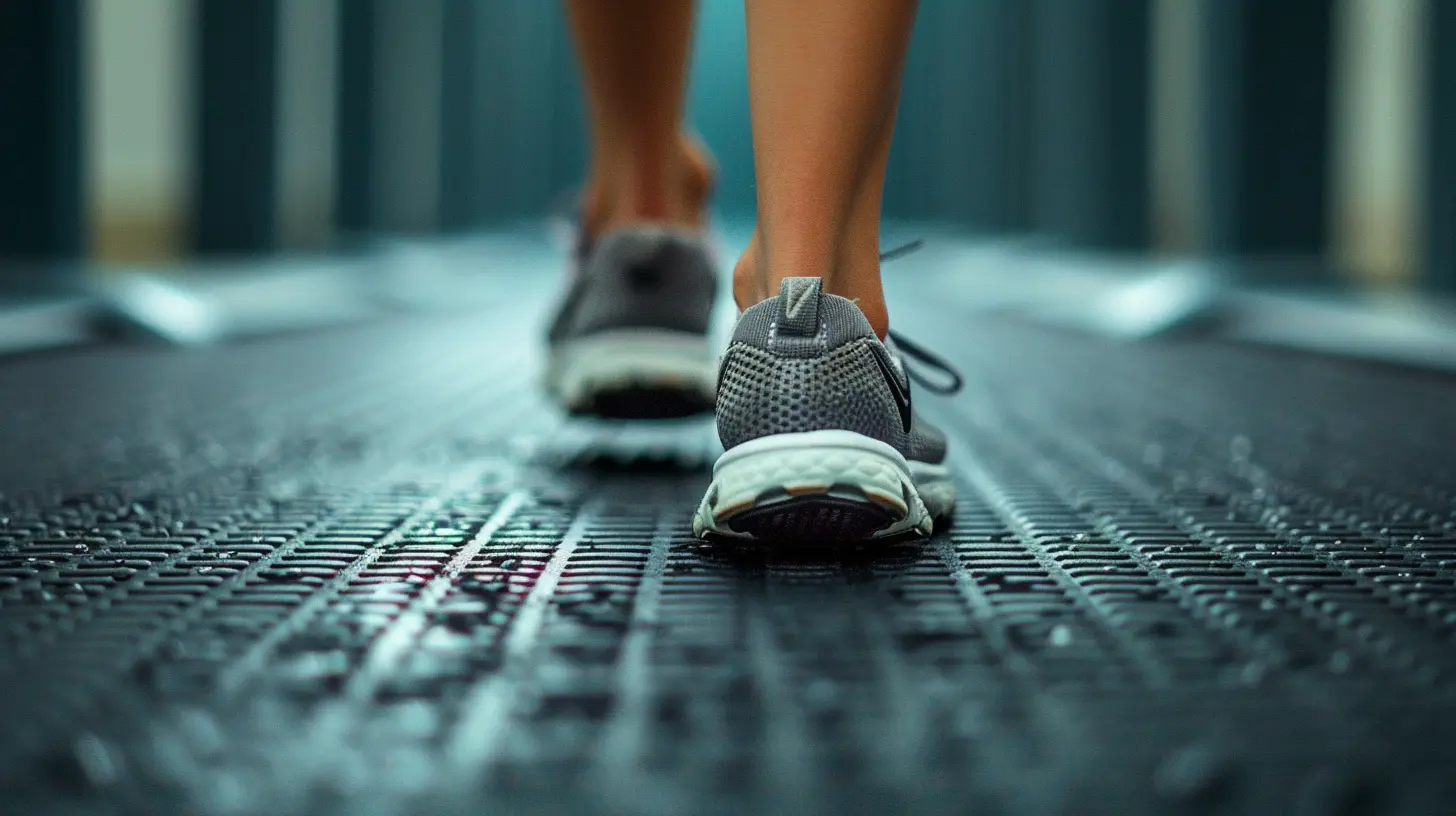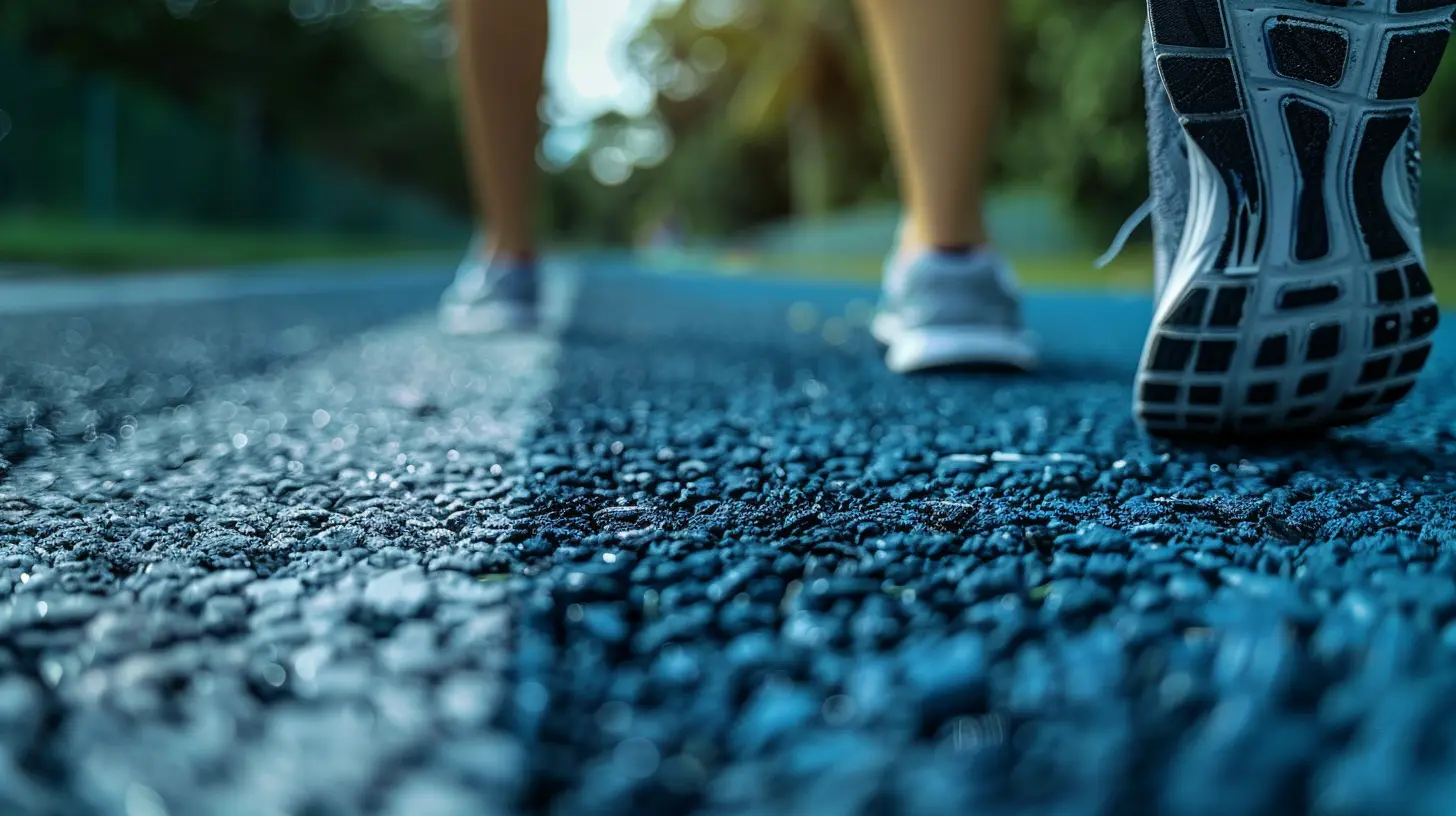The Benefits of Fasted Cardio and How to Do It Safely
25 October 2025
Alright, let’s not sugarcoat it — fasted cardio is the fitness buzzword that’s been making the rounds in gyms, fitness forums, and among your ultra-dedicated fitness influencer friends. You’ve probably heard someone casually mention, “Oh, I do my cardio fasted. It just melts fat,” while you're over here questioning whether your pre-workout breakfast sandwich was a bad idea.
So what’s the deal? Is fasted cardio truly the key to torching fat and getting shredded, or is it just another one of those hyped-up health trends? Spoiler alert: It can be a game-changer when done right — safely, smartly, and sassily. Let’s dive in, shall we?

What Even Is Fasted Cardio?
Fasted cardio, in plain English, is doing cardio (duh) on an empty stomach — usually after you wake up, before that first glorious bite of breakfast. Your body’s been chilling all night without food, so when you roll out of bed and hit the treadmill, it’s technically in a “fasted” state.Did you know? It takes roughly 8–12 hours for your body to fast and switch from burning your last meal to tapping into stored fat for energy. That’s why this is typically a morning ritual. You snooze, you fast, you burn.

The Science Behind the Sweat
Now, let's get a little nerdy — promise it won’t hurt. In a fasted state, your insulin levels are low. Since insulin is the hormone responsible for storing fat, low insulin levels = more fat-burning potential.Your body isn’t busy processing your last meal, so it reaches for the next best energy source: your good ol’ fat stores. Yup, that muffin top? It just became breakfast for your muscles.
Fasted cardio is thought to increase lipolysis (the breakdown of fat for energy) and fat oxidation (burning that fat for fuel). Boom! Biology with benefits.

The Real Benefits of Fasted Cardio
Alright, here’s where we really spill the tea. Fasted cardio isn’t magic — but the benefits are definitely worth flexing over, especially when paired with a solid training and nutrition plan.1. 🔥 Burn More Fat (Especially the Stubborn Kind)
Let’s be real. Some fat just doesn’t want to leave quietly. You know the type — belly fat, love handles, that annoying lower back pooch. Fasted cardio can help target that stubborn fat, especially when you’ve already leaned out and want those fine-tuned results.Think of your body as a fuel tank. When the easy-access fuel (food) is gone, it has to dig deeper — and that’s when those stubborn stores get the memo.
2. 🕒 It’s Efficient and Time-Saving
Get up. Lace up. Sweat it out. Done before breakfast. No protein shake needed, no cooking, no excuses. Fasted cardio is the no-fuss, no-frills approach for people who just want to get in, get it done, and move on with life.Plus, morning movement sets the tone for the day. You get to feel like a badass before most people have hit snooze.
3. 💡 Increased Mental Clarity
Ever notice how your mind feels sharper after fasted workouts? That brain boost isn’t a fluke. When your insulin is low and you’re running on fat, your brain gets hit with a wave of ketones — a clean-burning fuel that helps you feel more alert, focused, and ready to crush your to-do list.So yeah, you might be sweating buckets, but your brain is basically doing a happy dance.
4. 🧬 May Improve Insulin Sensitivity
Here comes another science nugget: training in a fasted state has been shown to improve insulin sensitivity. In non-nerd speak? It makes your body better at processing carbs throughout the day. So yes, that post-workout pancake stack might actually be used more efficiently. 🍳🥞5. 🧘♀️ Builds Mental Toughness
Let’s not downplay the mental side of it. Waking up early, skipping food, and choosing to exercise? That takes serious grit. Fasted cardio is as much about mental gains as it is physical. It teaches you discipline, consistency, and how to grind even when you’re not 100%.
How to Do Fasted Cardio Safely (No Passing Out Allowed)
Okay okay, cardio in a fasted state sounds fab — but don’t go sprinting out the door without a game plan. Done wrong, it can leave you dizzy, weak, and about two seconds from face-planting on the sidewalk.1. 🕖 Time It Right
The sweet spot? First thing in the morning, ideally 8–12 hours after your last meal. You’re truly fasted then. And no, black coffee or a little water won’t break your fast — they’re totally allowed. Coffee, in fact, can give a nice little boost!2. 🧃 Stay Hydrated
Drink water like it’s your job — especially before and during your fasted cardio. Dehydration + low blood sugar is a recipe for disaster. And nobody wants to be that person who keels over in the park. Guzzle that H2O, people.3. 🏃♀️ Choose Low to Moderate Intensity
This isn’t the time for HIIT circuits or hill sprints unless you’re really experienced. Stick with steady-state cardio: think brisk walking, light jogging, cycling, or elliptical work. You want to burn fat, not muscle.Intensity matters — harder workouts in a fasted state increase the risk of muscle breakdown and fatigue. Keep it chill, but effective.
4. 🥩 Refuel Post-Workout
You’ve just tapped into your fat stores — now give your body some love. Within 30–60 minutes post-cardio, eat a balanced meal with protein, healthy fats, and carbs. That’ll help your muscles repair and set you up for a successful day.Pro tip: A protein shake with a banana or a breakfast bowl with eggs and oats scores major post-workout brownie points (not real brownies, sorry).
5. 🧠 Listen to Your Body
Fasted cardio isn’t for everyone. If you’re feeling dizzy, nauseous, or like your soul is leaving your body, take a break. Your health > any potential gains.Oh, and if you're doing multiple intense workouts per day or training for performance (hello, marathoners), fasted cardio might not be ideal. Talk to a coach or dietitian who actually knows their stuff.
So... Who Should Be Doing Fasted Cardio?
Let’s get something straight: it’s not a one-size-fits-all miracle. But fasted cardio is fire for certain goals and lifestyles.It’s especially great for:
- People trying to lose body fat
- Folks with busy mornings who want a fast workout
- Anyone practicing intermittent fasting
- Fitness junkies in cutting phases
- Those who prefer light to moderate aerobic training
Not ideal for:
- People prone to blood sugar drops or fainting
- Individuals with eating disorders or disordered habits
- High-intensity athletes or powerlifters
- Anyone who just really freaking loves breakfast
Fasted Cardio Mistakes to Avoid (Don’t Be That Person)
Let’s set you up for success, not a viral gym fail video. These are the biggest fasted cardio sins:❌ Going Too Hard, Too Fast
Don’t jump into a 45-minute incline run on day one. Start with 20–30 minutes of walking or light jogging. Build up your stamina slowly.❌ Skipping Post-Workout Meals
Your body needs fuel post-fasted cardio. Starving yourself after the workout? That’s a fast track to losing muscle, not fat. Feed those gains!❌ Doing It Daily
Even if you’re obsessed — and we support the grind — fasted cardio every day is overkill. 2-4 times per week is plenty. Mix it with strength training and rest days.❌ Ignoring Warning Signs
Dizzy? Lightheaded? Heart racing like you're in a horror movie? Stop immediately. This isn’t a test of how tough you are — your body's trying to tell you something, so listen up!❌ Thinking It's a Magic Pill
Newsflash: fasted cardio won’t work if you’re overeating, under-sleeping, and skipping every weight session. It’s a tool, not a miracle.Final Thoughts: Is Fasted Cardio for You?
The truth? Fasted cardio can absolutely help you trim down, boost mental clarity, and add structure to your mornings — if it’s done the right way. It’s not a substitute for effort or discipline, but when paired with smart nutrition and training, it becomes a total power move.So, is it worth the early alarm and that growling stomach? Only you can answer that. But hey, if it means burning stubborn fat while the rest of the world sleeps, maybe it’s time to rise, shine, and sweat with purpose.
Go on, set your alarm a little earlier tomorrow — your metabolism swears it’ll be worth it.
all images in this post were generated using AI tools
Category:
Cardio WorkoutsAuthor:

Easton Simmons
Discussion
rate this article
1 comments
Nellie Willis
Fasted cardio boosts fat burning; proceed cautiously!
October 31, 2025 at 1:15 PM

Easton Simmons
Thank you for your comment! Fasted cardio can enhance fat burning for some, but it's important to listen to your body and prioritize safety.


